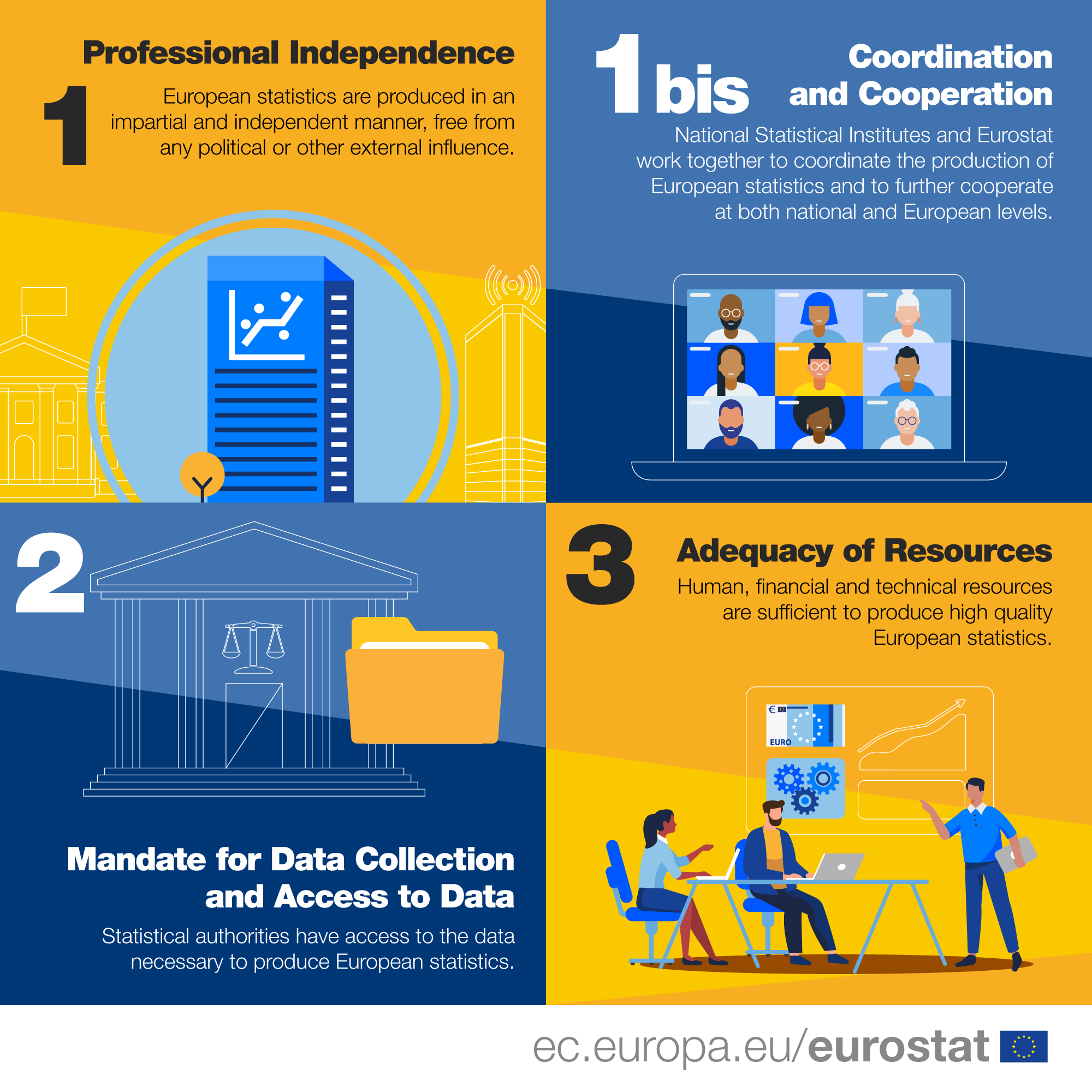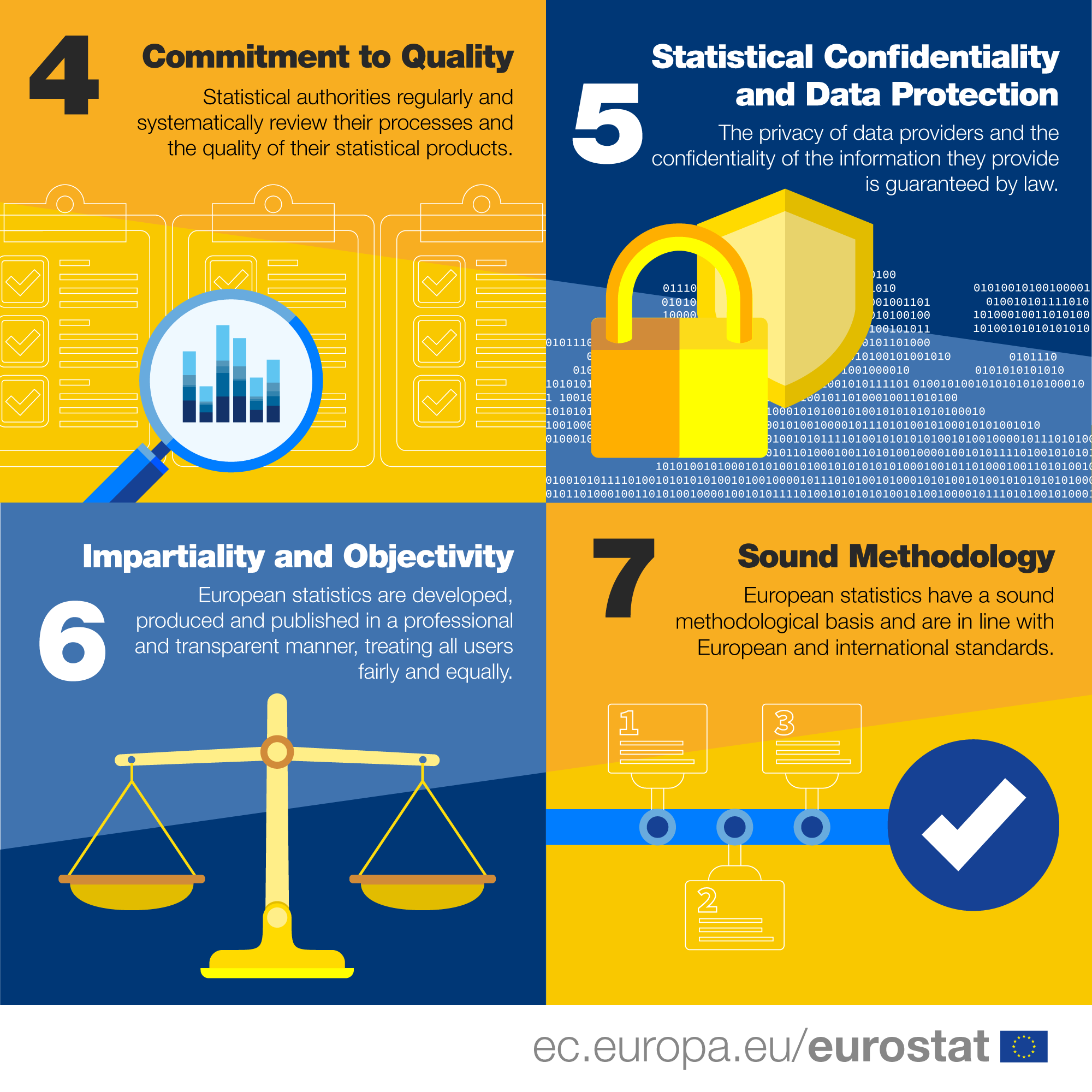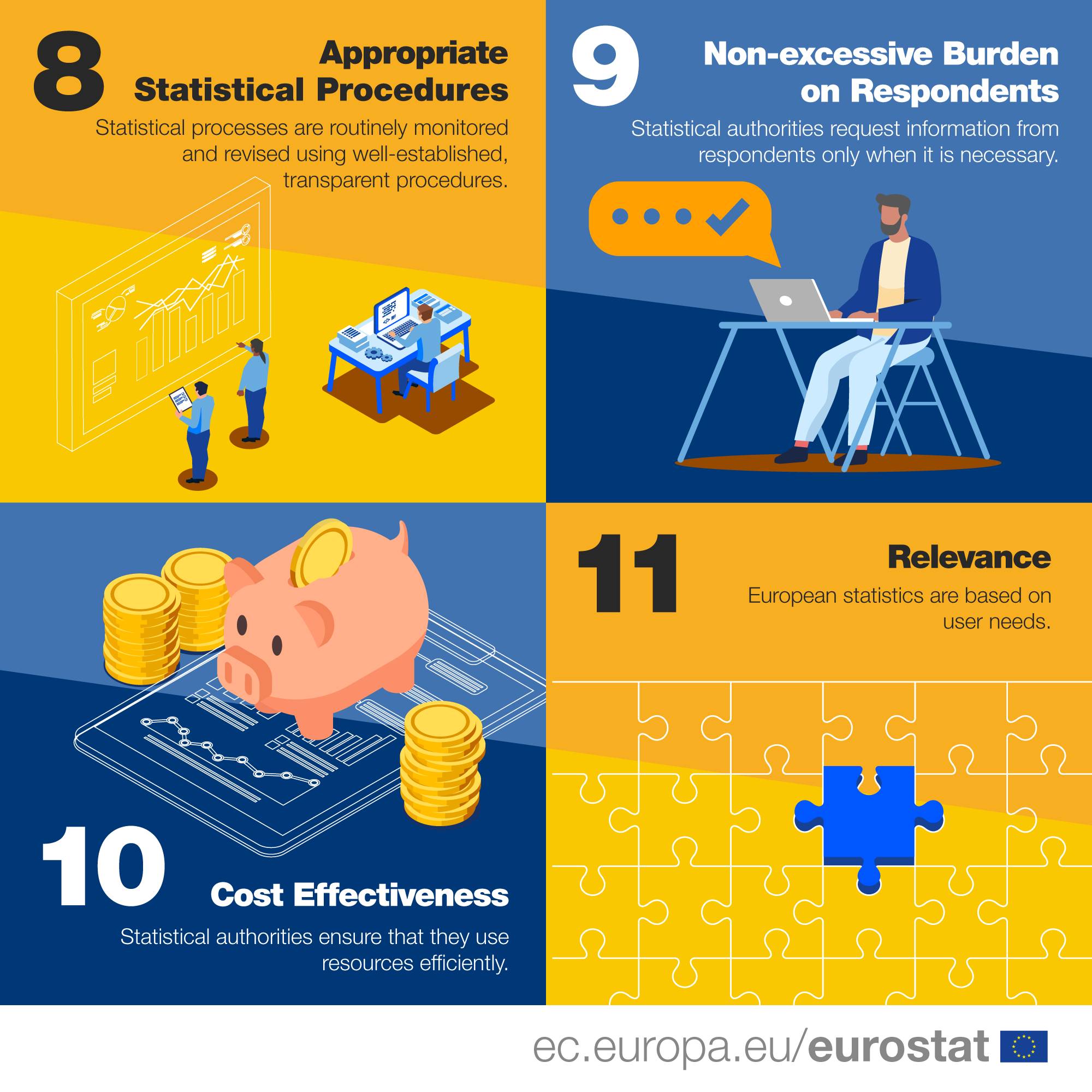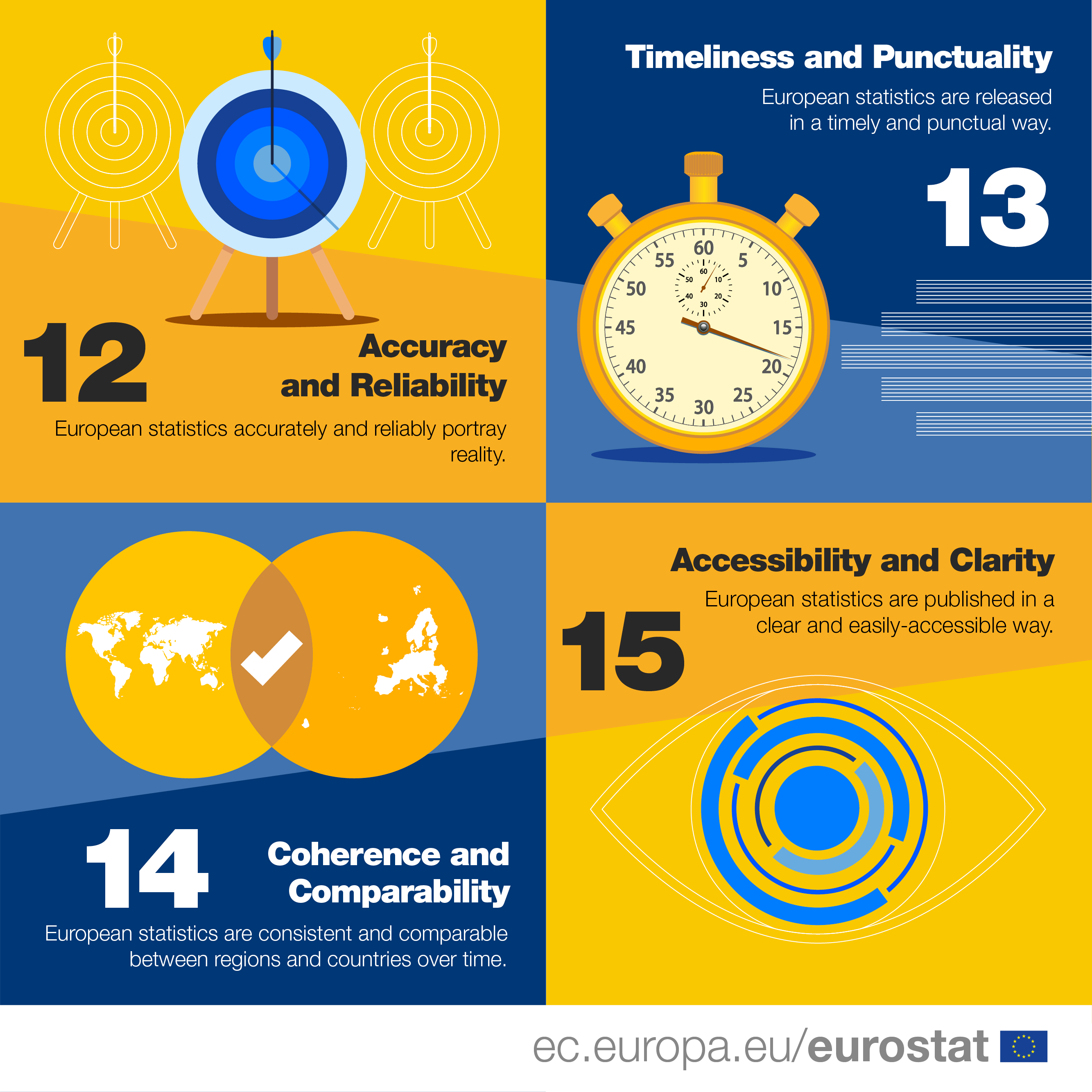Safeguarding quality with 16 key principles
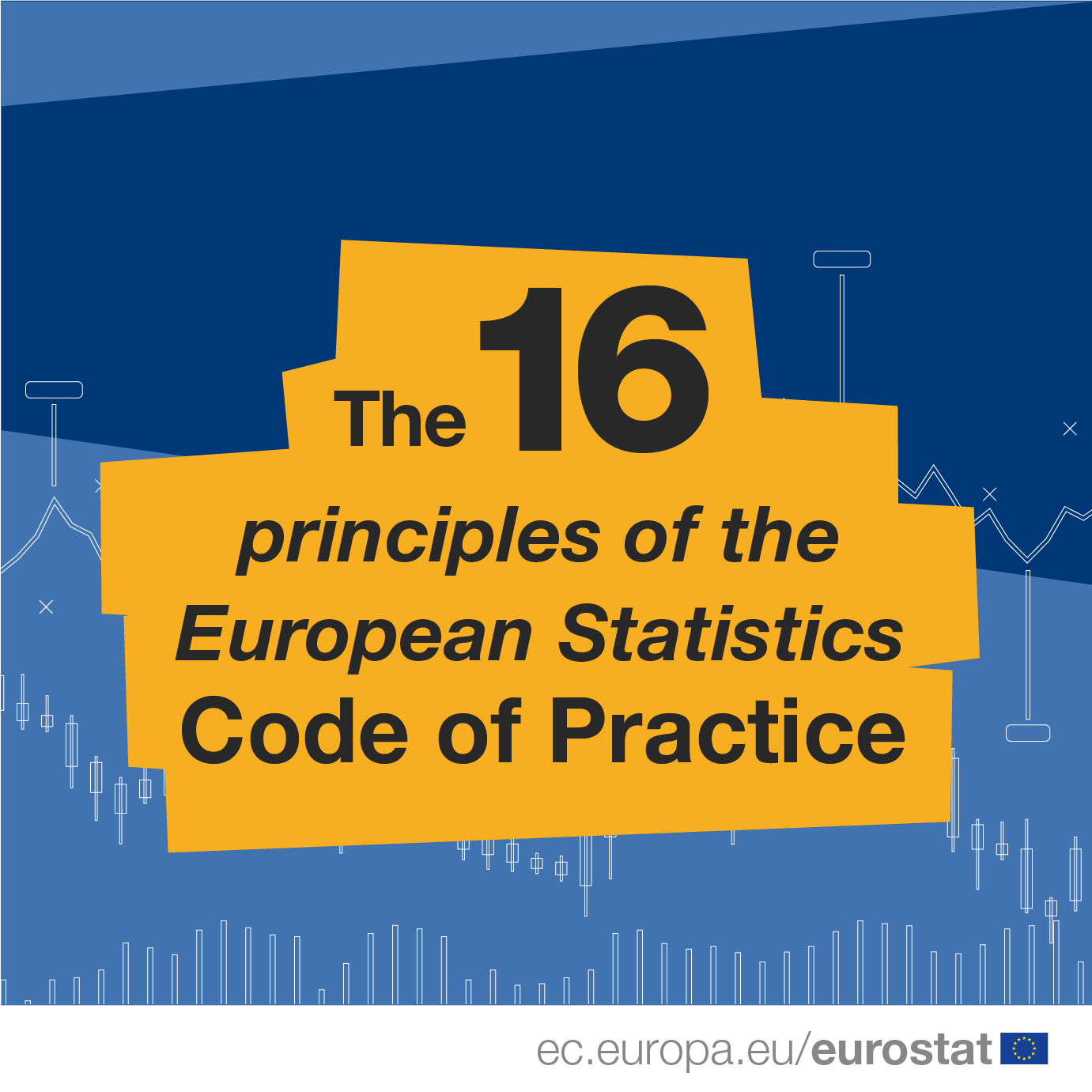
The European Statistics Code of Practice (CoP) is the cornerstone of the quality framework and sets the standards for developing, producing and disseminating European statistics.
It defines 16 key principles for the institutional environment under which the EU and national statistical authorities operate, as well as for the statistical processes and output. It also includes a set of 84 indicators for the best practices and standards for each of the 16 principles. These principles and indicators provide a reference for reviewing the implementation of the Code thus, helping to increase transparency in the European Statistical System. Please see also our infographics below.
CoP publication in multiple languages



